
Talking Heads were an American new wave band formed in 1975 in New York City. The band was composed of David Byrne, Chris Frantz (drums), Tina Weymouth (bass) and Jerry Harrison. Described as "one of the most critically acclaimed bands of the '80s," Talking Heads helped to pioneer new wave music by combining elements of punk, art rock, funk, and world music with an anxious yet clean-cut image.

Rocket to Russia is the third studio album by the American punk rock band Ramones, and was released on November 4, 1977, through Sire Records. It is the band's last album to feature original drummer Tommy Ramone, who left the band in 1978 to focus on production. The album's origins date back to the summer of 1977, when "Sheena Is a Punk Rocker" was released as a single. That summer was known as the peak of the punk rock genre since many punk bands were offered recording contracts. The album's recording began in August 1977, and the band had a considerably larger budget with Sire allowing them between $25,000 and $30,000; much of this money went toward the album's production rather than recording.

More Songs About Buildings and Food is the second studio album by the American rock band Talking Heads, released on July 14, 1978, by Sire Records. It was the first of three albums produced by collaborator Brian Eno, and saw the band move toward an increasingly danceable style, crossing singer David Byrne's unusual delivery with new emphasis on the rhythm section composed of bassist Tina Weymouth and her husband, drummer Chris Frantz.

Remain in Light is the fourth studio album by the American rock band Talking Heads, released on October 8, 1980, by Sire Records. Produced by Brian Eno, his third album with the band, the album was recorded at Compass Point Studios in the Bahamas and Sigma Sound Studios in New York during July and August 1980.

Fear of Music is the third studio album by the American new wave band Talking Heads, released on August 3, 1979, by Sire Records. It was recorded at locations in New York City during April and May 1979 and was produced by Brian Eno and Talking Heads. The album reached number 21 on the Billboard 200 and number 33 on the UK Albums Chart. It spawned the singles "Life During Wartime", "I Zimbra", and "Cities".

Tom Tom Club is an American new wave band founded in 1981 by husband-and-wife team Chris Frantz and Tina Weymouth and as a side project from Talking Heads. Their best known songs include the UK top 10 hit "Wordy Rappinghood" and the US top 40 hit "Genius of Love", both from their 1981 debut album, and a cover of The Drifters' "Under the Boardwalk" that reached the UK top 30.
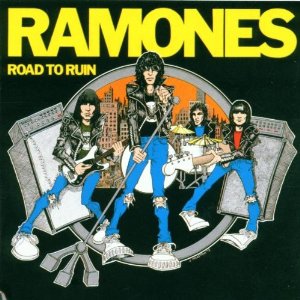
Road to Ruin is the fourth studio album by the American punk rock band Ramones, released on September 22, 1978, through Sire Records as LP record, 8 track cartridge & audio cassette. It was the first Ramones album to feature new drummer Marky Ramone, who replaced Tommy Ramone. Tommy left the band due to low sales of previous albums as well as stress he experienced while touring; however, he stayed with the band to produce the album with Ed Stasium. The artwork's concept was designed by Ramones fan Gus MacDonald and later modified by John Holmstrom to include Marky instead of Tommy.

Leave Home is the second studio album by the American punk rock band Ramones. It was released on January 10, 1977, through Sire Records, with the expanded CD being released through Rhino Entertainment on June 19, 2001. Songs on the album were written immediately after the band's first album's writing process, which demonstrated the band's progression. The album had a higher production value than their debut Ramones and featured faster tempos. The front photo was taken by Moshe Brakha and the back cover, which would become the band's logo, was designed by Arturo Vega. The album spawned three singles, but only one succeeded in charting. It was also promoted with several tour dates in the United States and Europe.
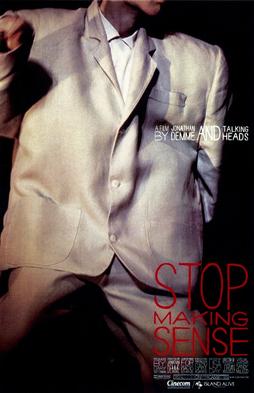
Stop Making Sense is an independently produced 1984 American concert film featuring a live performance by the American rock band Talking Heads. Directed by Jonathan Demme, it was shot over four nights at Hollywood's Pantages Theatre in December 1983, when Talking Heads were touring to promote their 1983 album Speaking in Tongues. Stop Making Sense includes performances of the early Talking Heads single, "Psycho Killer" (1977), through to their most recent hit at the time, "Burning Down the House" (1983). It also includes songs from the solo career of frontman David Byrne and by Tom Tom Club, the side project of drummer Chris Frantz and bassist Tina Weymouth.

Too Tough to Die is the eighth studio album by the American punk rock band Ramones. It was released on October 1, 1984, and is the first Ramones record to feature Richie Ramone on drums. With ex-member Tommy Ramone producing, the recording process was similar to that of the band's 1976 self-titled debut album. Likewise, the record's style—both lyrically and compositionally—saw the band returning to their roots. The photograph on the album cover, which features silhouettes of the band members, resulted from a "lucky accident" after photographer George DuBose's camera malfunctioned.

Naked is the eighth and final studio album by American rock band Talking Heads, released on March 15, 1988, by Sire Records. Following the more straightforward new wave and pop rock sound on Little Creatures (1985) and True Stories (1986), Naked marked a return to the worldbeat stylings of both Remain in Light (1980) and Speaking in Tongues (1983), blending elements of Afrobeat, Latin funk, and art pop. The album's songs were formed from improvisational jam sessions recorded in Paris, which featured the participation of numerous guest musicians such as former Smiths guitarist Johnny Marr and singer Kirsty MacColl. Lyrics and vocals were then added in New York City following the Paris recordings.
Anthony Carmine Bongiovi Jr is an American record producer and recording engineer. He is the cousin of musician Jon Bon Jovi.
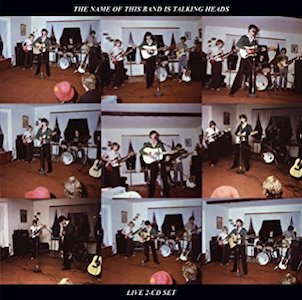
The Name of This Band Is Talking Heads is a double live album by the American new wave band Talking Heads, released in 1982 by Sire Records. The first LP features the original quartet in recordings from 1977 and 1979, and the second LP features the expanded ten-piece lineup that toured in 1980 and 1981. The album contains live versions of songs that appear on their first four studio albums: Talking Heads: 77, More Songs About Buildings and Food, Fear of Music, and Remain in Light.
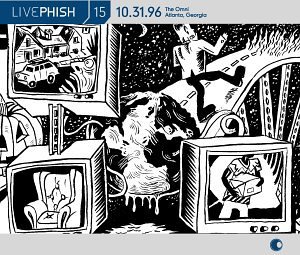
Live Phish Vol. 15 was recorded live at The Omni in Atlanta, Georgia, on Halloween night, 1996.

No Talking, Just Head is the only studio album by the Heads, a band composed of Jerry Harrison, Tina Weymouth, and Chris Frantz of Talking Heads, joined by a variety of guest singers. Released in October 1996, the project was commercially and critically unsuccessful. The band members would go on to pursue other musical interests.

"Psycho Killer" is a song by American rock band Talking Heads, released on their debut studio album Talking Heads: 77 (1977). The group first performed it as the Artistics in 1974.

Once in a Lifetime is a three-CD box set by American post-punk/new wave band Talking Heads, released in the United States by Sire, Warner Bros, and Rhino in 2003. The set also includes a DVD containing an expanded version of the music video compilation Storytelling Giant. The discs are packaged in a wide horizontal book that recalls a CD longbox, featuring paintings by Russian artists Vladimir Dubossarsky and Alexander Vinogradov and with art direction by Stefan Sagmeister. Sagmeister would later work with David Byrne and Brian Eno on their 2008 collaborative album Everything That Happens Will Happen Today.
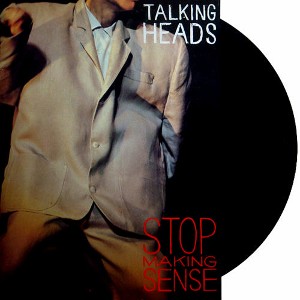
Stop Making Sense is a live album by the American rock band Talking Heads, also serving as the soundtrack to the concert film of the same name. It was released in September 1984 and features nine tracks from the film, albeit with treatment and editing. The album spent over two years on the Billboard 200 chart. It was their first album to be distributed by EMI outside North America.

Ed Stasium is an American record producer and audio engineer, who has worked on albums by the Ramones, Talking Heads, Motörhead, the Smithereens and Living Colour.

"Love → Building on Fire" is a song by rock band Talking Heads, released as a single in 1977. The single preceded the band's debut album by seven months, and was recorded before keyboardist and guitarist Jerry Harrison joined the band. As the single was the first piece of music released commercially by the band, its release was cited as a milestone in the band's history in its Rock and Roll Hall of Fame entry.



















